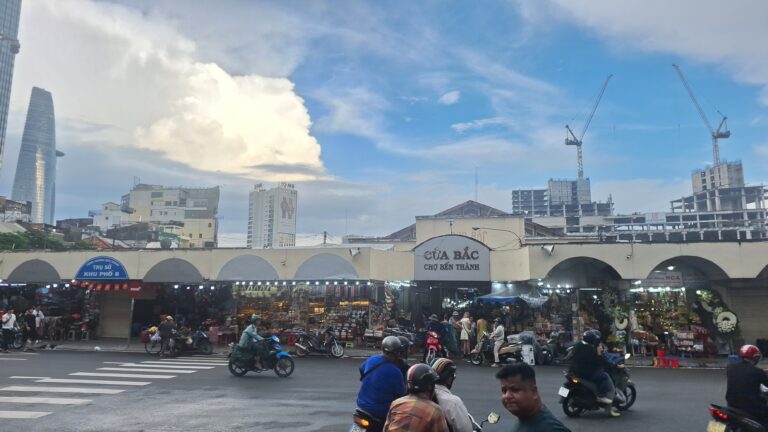
Trip Preparation: Motorbike Gear in Vietnam
Share:
- Published:
- Updated: 20/01/25

Table of Contents
Know Your Top Gear in Vietnam
One can argue that the goal of an adventure is getting to your destination. When it comes to adventure riding, though, the journey is the destination. However, the most important part of any adventure ride happens even before you turn that key. It’s the preparation – the journey to the journey. Knowing the top gear to bring can make or break your adventure in Vietnam.
In Vietnam, like a lot of countries in Asia, only a small percentage of people wear proper gear. You’d spot people riding around wearing only a helmet, or a tank top paired with shorts and flip-flops–not exactly high quality or safe road wear. Wearing proper gear has all the pros and, other than being expensive, has no other cons. A rider has nothing but money to lose from wearing proper gear. But how much is your body worth?
Other than safety, the biggest reason why you want to wear proper equipment on your adventure ride is adaptability. When you’re out on the road, be it dirt or asphalt, the proper gear in Vietnam will ensure that you’ll be well-prepared for anything coming your way.
There are five primary pieces of gear that riders should look into regardless of ride or destination. These five crucial pieces are Helmet, Gloves, Jacket, Pants, and Boots. Of course, there are more. But these five primary pieces of gear are what we’ll be covering for now.
Five Primary Top Gear to Remember in Vietnam
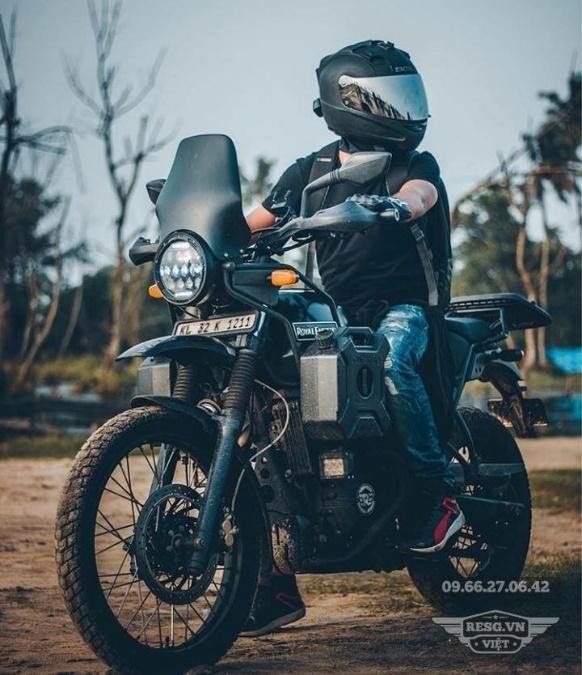
First off, let’s talk about why riders in Vietnam should spare some time to look into these 5 top pieces of gear. The helmet is a no-brainer, but few riders wear gloves and proper boots. Some people think that a helmet, a leather jacket, a pair of work boots, and jeans are enough.
After the head, hands get a lot of the beating in a crash. Think about it—what is a person’s first instinct when falling? They put out their hands. A good pair of motorcycle gloves are a great investment and there are plenty of options.
The same goes for boots. The feet can easily be damaged in an accident, especially the ankles. Protect your feet by wearing appropriate boots for the type of riding you’ll be doing. A pair of Nike’s might do well on the court, but on the road, the only thing the Jumpman’s going to give you is an injury.
Jackets and pants add protection in the form of D3O armoring and abrasion resistance. They also come in a variety of options that we’ll get into later. Those who say that a pair of jeans is all that they’ll ever need have obviously never slid on grass.
D3O is the name of a company that makes armor for all types of sports including motorsports. They developed an armor which is soft and flexible but would immediately turn stiff when a force is introduced. This armor absorbs and dissipates energy during an impact and minimizes the force transmitted to your body.
A rider in Vietnam should wear the appropriate gear for the type of riding they do. A rundown of the many different types of each gear would prove useful in this aspect. Let’s start with the most important.
Top Gear in Vietnam – Mind Your Head
A helmet is the most important piece of gear not just in Vietnam but in all countries. We’ll only be covering helmets that provide full coverage. How does a rider know which type of helmet is best suited for an adventure riding trip in Vietnam?
Full-Face Helmets
Introducing first, the most popular – the full-face helmet. Full-face helmets are the largest category ranging from decked out full tuck race protection to trendy lids for weekend rides. A full-face helmet looks exactly like it sounds: it provides a full face and head protection. If you’re a supersport or naked bike rider, this one’s for you.
These helmets are relatively light and are usually the most streamlined and safest as they are designed to shred lap times on the race track and to manage tremendous forces in the event of a crash.
More often than not, these helmets are also the quietest because of their single shell construction, though there are other types of helmets that are quieter than some full-face helmets.
Dirt Helmets
Now, if you like getting down and dirty and you don’t mind the braap braaaap braaaaap of that two-stroke, then the next helmet is perfect. Dirt helmets are easily distinguishable due to their appearance and are donned by young’uns on dirt bikes, dual-sports, and supermotos.
Dirt helmets are characterized as having a large peak jutting out of the brow of the helmet acting as a sun visor, a longer chin guard for better airflow, and an absent face shield usually replaced with a pair of goggles, though newer models have removable face shields.
Dirt helmets are some of the lightest helmets and flow a ton of air which means they’re noisy. These are designed for use in the dirt, meaning they are not as safe as full-faces, but no sane person goes 120 km/h on a dirt track anyway.
Modular Helmets
But what if you’re a rider who loves doing 40,000 km a season on cross-country treks on the highway? Then the modular helmet would come in very handy. The modular helmet and the full-face helmet look and feel alike, save a few features.
First, modular helmets are usually upright helmets. This means they’re designed for mostly upright riding on tourers, sport-tourers, and some adventure bikes.
Second, the whole “face” of the helmet can be moved upward out of the way. Designed with convenience in mind, these helmets provide full-face protection with the flexibility of an open-face design. This is great for when you’re stopped at a light, when pulled over on the side of the road for a chat with your buddy, or when you need a quick check of the map.
Third, because of the additional hinge mechanism, most modular helmets are heavier in general. A light modular can be the same weight as a medium to heavy sized full-face.
Dual Sport / Adventure Helmets
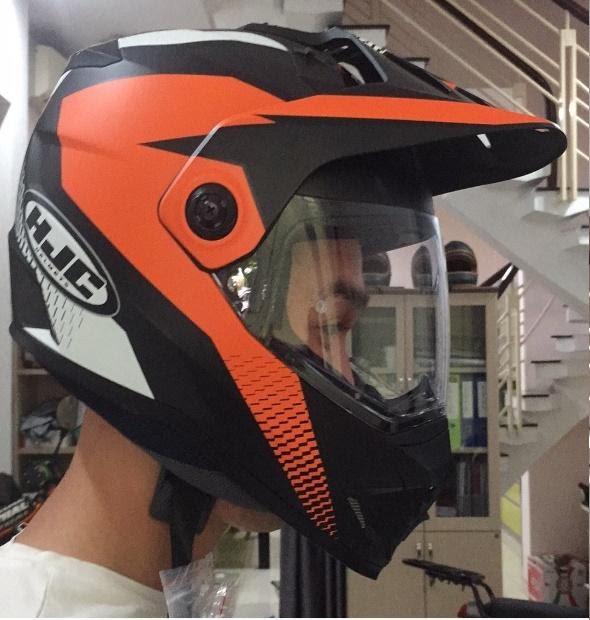
Now, what helmet should you get if you equally like the highway and the dirt? You need a dual sport helmet. This helmet looks like the lovechild between a dirt helmet and a full-face helmet. It still has full-face protection, a face shield, a removable and aerodynamic peak, and a chin guard that’s still pronounced, but not as much as a dirt helmet. Onyabike Adventures utilizes dual sport helmets in Vietnam as the standard adventure gear.
Traffic in Vietnam is not the highest flowing in the world so a highly modifiable dual sport helmet would be a practical option; remove the peak and it would look like a regular full-face, take out the visor and slap on a pair of goggles and you’ve got a good dirt helmet – a dual purpose helmet, hence the name.
Onyabike Adventures has a variety of helmets available for rent and sale. Choosing the right one for your adventure ride is just a matter of determining what route or which riding style you’ll be doing.
Riding Gloves

The next piece of safety equipment we’ll discuss is gloves. A good pair of motorcycle gloves will be composed of leather or a textile material with molded plastics and either soft or hard armor. Leather gloves are found mostly among sport and track riders as they provide great protection, but can also be found in the cruiser crowd and commuters or casual riders – a huge proportion of riders. Gloves for track use are usually packed with safety features from pinky bridges to knuckle protectors and palm sliders.
Commuter and cruiser gloves are usually stripped down versions of these, sometimes combined with mesh or other materials and having less protection with more foaming and perforation, focusing on comfort and movability. Perforated leather gloves, though having less breathability, would be a step up in protection but these gloves would not fare well in rainy, muddy, and wet environments.
Waterproof Textile or Mesh Gloves
Waterproofing and insulation are not uncommon in gloves, though these features usually appear more in textile gloves oriented for touring or adventure riding. Because adventure and touring riders don’t need to go as fast as sportbike riders, gloves specific for these types of riding lose out on protection, but what they lack in protection they make up for in other features such as waterproofing, insulation, and comfort.
When planning to ride during the monsoon months in Vietnam, waterproof textile or mesh gloves would be best. Goretex material is the holy grail of waterproof gear in Vietnam. This material can be found on gloves, shoes, jackets, and pants. It’s 100% breathable and 100% guaranteed dry but it’ll take a hefty load out of your pocket.
An armored textile or mesh glove, like what we have at Onyabike Adventures is the best option. Alpinestar’s Spartan gloves and Hevik’s HGS 105R are two of the gloves we have at our arsenal. Both gloves are suited for hot weather with the 105R having more mesh material for maximum airflow.
Top Gear in Vietnam – Jackets
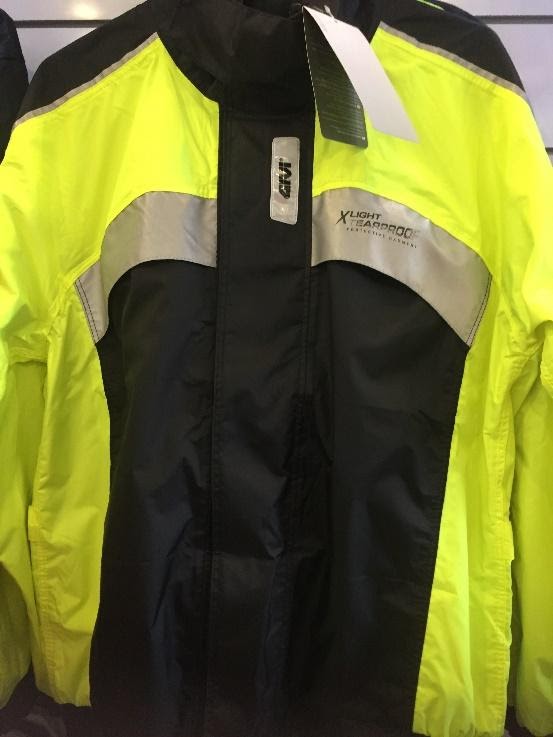
Now let’s talk jackets. There are three main types of jackets: leathers, textiles, and mesh. Leathers are most often associated with, yes you guessed it, sport bike riders and race tracks since they provide the best abrasion protection from those 200 km/h lowsides. However, they can be quite hot during a stop light in the sunny tropics. Leathers are also popular among cruiser riders and commuters. They are also great for warm to cool conditions depending on the perforation.
Mesh jackets provide maximum air flow but miss out on protection. These jackets have large perforations and are designed to cool the rider during hot summer rides but can be used a little bit into the rainy season with the help of an inner liner. Since Vietnam’s climate only switches between rainy and sunny, a mesh jacket could be an adventure rider’s best friend. A word of caution, however, most inner liners are usually branded water-resistant, not waterproof.
A rider who wants a little more protection than a mesh jacket but wants more ventilation than a leather jacket may want to set their eyes on a textile jacket. On average, an adventure rider would usually be seen sporting textiles. Textile jackets are better than mesh jackets in terms of abrasion resistance but are still bested by leather.
The Right Jacket
Because textile jackets have fewer perforations, they are stronger. Don’t let the lack of holes fool you, though—these jackets still flow a ton of air thanks to active and passive vents strategically placed on the jacket. Textile jackets are said to be a good middle ground between protection and comfort and give riders more adaptability because the jackets are configurable.
But do they fare well in the rain? The answer is debatable because no jacket is truly waterproof. Water still leaks into any jacket, it’s only a question of when. But since textiles have fewer perforations, they typically last longer over mesh.
A textile jacket with proper ventilation and a full-sleeve removable inner liner is the most versatile gear and would be a welcome staple in any adventure rider’s closet, especially in Vietnam where a bright sunny afternoon can turn into heavy downpour in a snap.
Taichi’s all season RSJ 710 is a good example and is a staple at Onyabike Adventures. This jacket provides adequate protection, interior liners, and water resistance.
Top Gear in Vietnam – Pants

If you’re looking for more protection than what Levi Strauss provides Motorcycle pants follow the same rule as jackets. They also come in three types, but without inner liners, and come with the added bonus of an additional category: armored jeans.
Leather, Textile, and Mesh pants function the same way as their jacket counterparts, but armored jeans add a stealth option to those who want to disguise their motorcycle pants as regular jeans. For adventure riding, versatility is key. A pair of waterproof breathable riding pants is heavenly. Luckily, a large variety of textile and mesh jackets fall under that description. An example of stealthy riding jeans are Rev’It’s H2O jeans which they claim are waterproof.
On a side note, Kevlar is a noteworthy material you’d want to see on your pants. Once you go down on the tarmac, the added heat dissipation and abrasion protection Kevlar provides may just buy you a few seconds of slide time.
Some riders in Vietnam prefer wearing jeans on their adventure rides mostly due to their comfort, and they just add some knee or shin braces for added protection. Though not common, motorcycle pants are available in Vietnam. Common ones are riding jeans and textile pants.
Top Gear in Vietnam – Boots
These boots were made for ridin’ and that’s just what they’ll do. As previously mentioned, a pair of regular shoes would do next to nothing in a crash. Even a pair of leather boots would do little. A good motorcycle boot must have armor in all the right places to be deemed rider-worthy.
A good riding boot should come up at least to the ankles, have a steel or reinforced toe box, and protection around the ankle bone. Boots for street use are usually outfitted with impact and slide protection and include stealthy design that make them appear like a normal pair of shoes.
Boots for off-road and ADV use are a little bit more distinguishable due to their design. These boots cover up to the shin and are specialized to manage torque forces and bumps riders may experience when riding off-road. They have to protect the rider from rocks, logs, and branches and also have good sole protection for when it comes time to hang that foot out.
Something to note is that a lot of ADV riders actually buy motocross boots instead, for the reason that motocross boots provide better protection off-road and are generally cheaper.
Boots, though available, are a little hard to come by in Vietnam. Some riders just pick out a solid pair of reinforced working boots as these too have a steel toe and heel protection with some even having reinforced steel soles.
Top Gear Luggage Options in Vietnam
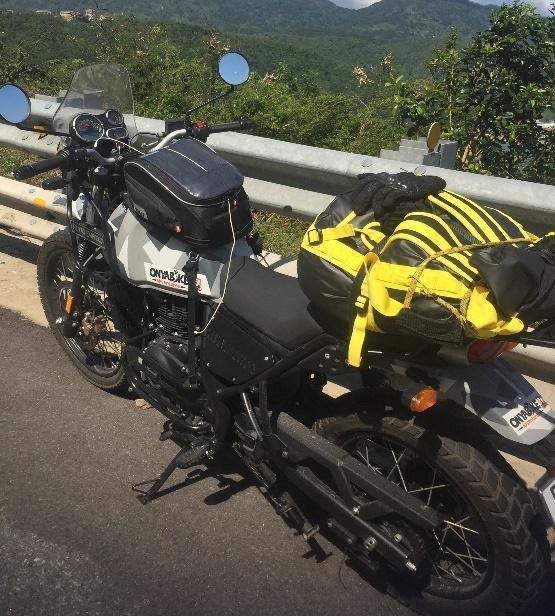
Now that you’re all set, it’s time to discuss what kind of luggage you’ll be taking with you. Most riders have trouble deciding between soft luggage carriers or hard cases, and both come with their pros and cons.
Hard cases vs Soft cases
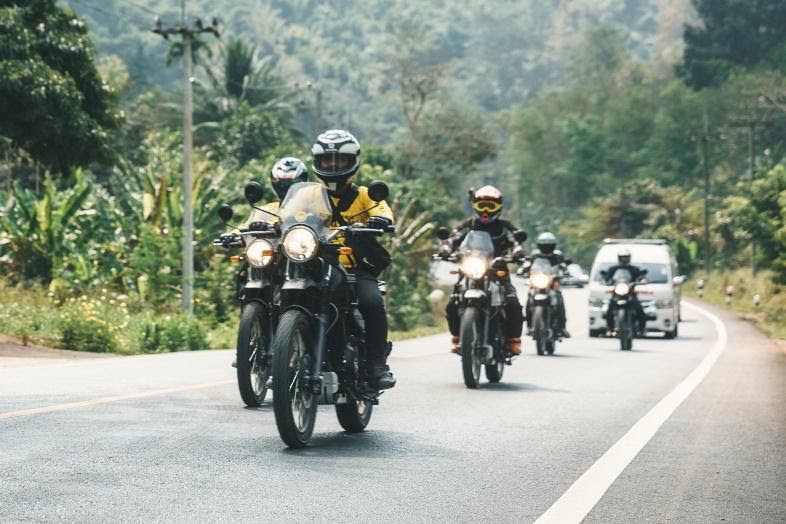
Hard cases are great when you need a little waterproofing. Though not all hard cases are waterproof, they stand a better chance over soft luggage on the average. They’re also more secure as most hard cases come with locks.
However, hard cases are prone to cracking if a bike falls on it, and that’s never a good thing when you know you’ll be going off-road. Also, space can be a limiting factor as it can be hard to squeeze in more luggage into a hard case than a soft one.
Soft cases, on the other hand, will do better when a bike goes down, and though they have rain shells, they can be prone to leaks under heavy rainfall. Riders could also squeeze in a little bit more stuff but they won’t be as secure. Then again, most soft luggage is removable and can be converted into a backpack or shoulder bag.
On a side note, a tank bag is invaluable on a long distance trip. The ease of access and the added benefit of a waterproof phone or GPS pocket would do a lot of adventure and tourer riders good. And because they sit on the fuel tank, they won’t mess up the riding dynamics of bikes too much.
That’s why at Onyabike Adventures we use the Givi RTB01 and PTB01. These tank bags have a spacious 15-20 liter storage capacity, enough for the usual things you’d bring on your adventure trip. If you need more storage on your Vietnam adventure trip, a backpack and some bungee straps can go a long way.
Ready to Rock
And so, that’s a little insight into how an adventure ride on a bike begins. A bit of research goes a long way. Hopefully, what you’ve read will help you prepare for any journey on or off-road. Whether it be asphalt, pavement, gravel, sand, or rain, whatever nature has in store for you, you’ll be twisting that throttle shouting, “Bring it on!”
Related Posts
Recent Posts


